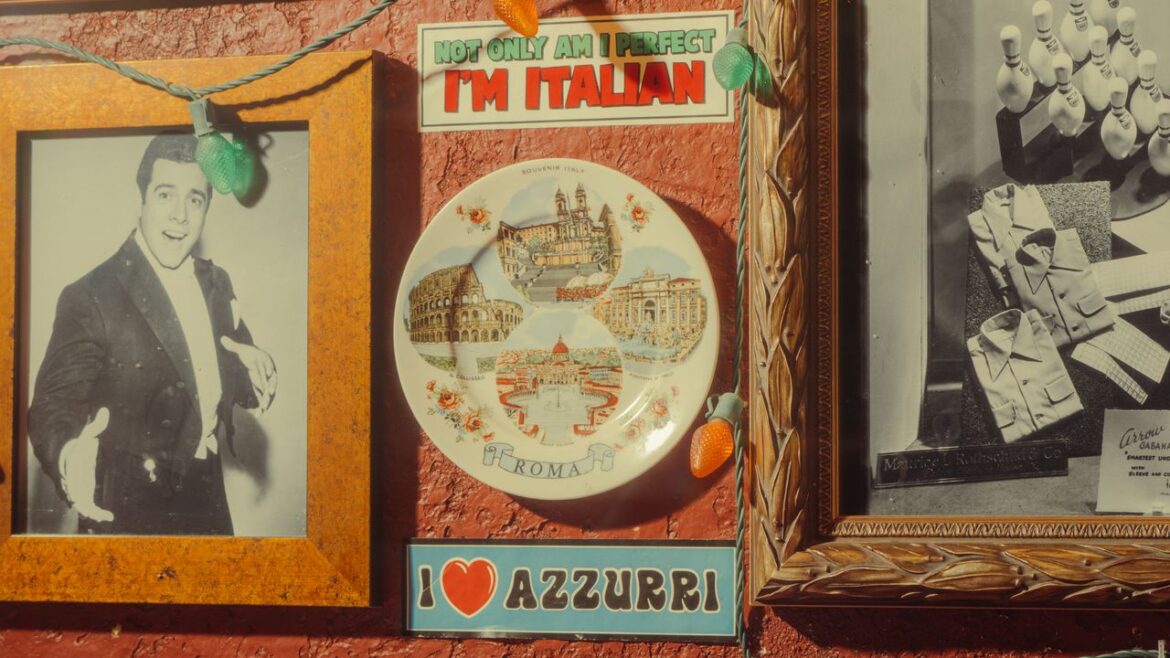“It shaped the perceptions of red sauce in Middle America,” especially in places where there weren’t huge pockets of Italian immigrants, says Tim Alevizos, a Minneapolis-based consultant who oversaw Buca’s branding. “As the original red sauce joints were dying off, Buca was the introduction to that type of Italian” and many people’s first tastes of frutti di mare and eggplant parm. “I don’t know if they were keyed into whether Buca was authentic or not, but they didn’t have a lot to compare it to. Plus, it was fun and the food was tasty.”
And unlike the Olive Gardens and the Macaroni Grills, Buca managed to feel like a storied, independent neighborhood restaurant. For me, the sheer number and idiosyncrasy of the pictures and paraphernalia on the walls at my local Buca made it impossible to imagine that this existed anywhere else.
But as often happens with growth, Buca slowly began to shift away from Roberts’ original vision. In 1996 he hired a CEO, Joseph Micatrotto, an Italian-American from Cleveland, to help the company expand and eventually go public. Micatrotto wanted to de-emphasize the kitsch and infuse his Italian immigrant family’s story into Buca’s branding.
“The idea was to bring legitimacy,” Micatrotto says, his voice booming into the phone. “Phil’s edginess and tongue-in-cheek stuff, I enjoyed that. But the difference is that I lived that. He didn’t.”
He reframed the name of the restaurant to be a reference to his grandfather, Giuseppe—“Beppo,” he says, is slang for the name—and rebranded the concept as “Southern Italian immigrant cuisine.”
Micatrotto “started mandating that the decor team stop with the photos of nuns watching Wheel of Fortune,” Alevizos recalls. “Before every store opening he’d do a walk-through and point out, ‘That has to go. That goes. That definitely goes.’ And it was always a contest to see what they could get past him.”
Micatrotto cowrote a cookbook with Renda, Into the Sauce, in which Micatrotto recast the Buca menu as a compendium of his family’s recipes. “He was taking all this credit in the cookbook,” Renda says, “but why are you bringing in your grandfather? He had nothing to do with Buca.”
Corners were being cut in food preparation. “Instead of starting with your San Marzano tomatoes and chopping them up, you were getting a package of marinara sauce and dumping it into a steam kettle,” Roberts says with a sigh. The quality was slipping; the customers were noticing. And 9/11. And the Atkins Diet. And, and, and. Things were not looking good for Buca.
Both Roberts and Renda left the company in 2003, around the time that Buca’s investors determined that to boost revenue, the restaurant needed to open for lunch. Roberts felt strongly that this was incongruent with the Buca experience, “a meal of indulgence, where you had a couple bottles of wine and overate and listened to ‘That’s Amore’ by Dean Martin too many times.” (Roberts and Renda still live in Minneapolis; Roberts runs a few restaurants, and Renda does restaurant consulting.)

